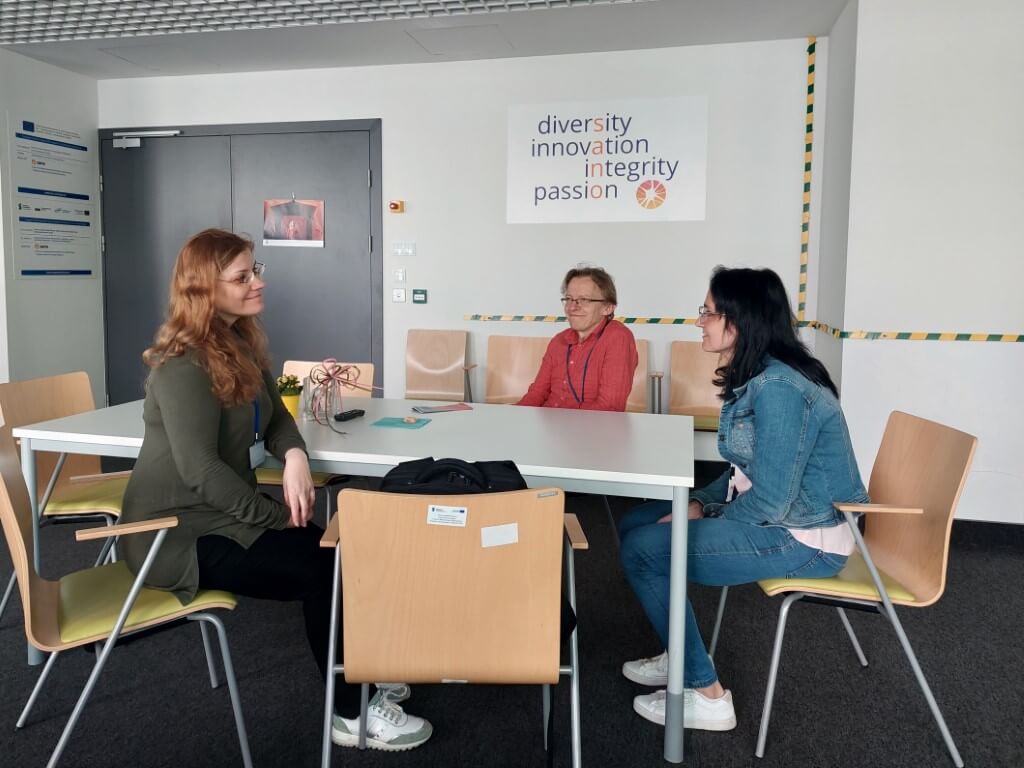The Sano team had a great opportunity to experience the power of the “Teaming for Excellence” program recently. A week ago, we had guests from Fraunhofer ISI, an institution which is our partner and has an aim to help Sano with its integration into the international scientific environment.
Our guests, Tanja Bratan, coordinator of the “Innovations in the healthcare system” business unit, and Liliya Pullmann, economist and senior researcher at the “Emerging technologies” competence centre at Fraunhofer ISI, gave us the series of innovation training and provided in-depth talks with the Sano teams. We also asked our guests several questions, and the answers are extremely important and thought-provoking for any developing scientific organization.
Sano: What do you think about the potential of Centres of Excellence? Could you say more about the Sano & Fraunhofer ISI partnership?
Tanja Bratan and Liliya Pullmann: Centres of Excellence are an excellent way of creating strategic partnerships between institutions from so called “widening countries” and leading institutions in more advanced countries. Sano was established as a partnership between institutions in Poland, the UK and Germany and has made significant progress since its official start in 2019.
Our impression was – especially after in-depth talks with the teams – that there is a solid knowledge base, motivated research groups as well as ambitious goals, which make up the necessary critical mass for the development of Sano as a young scientific organization. There are also favourable framework conditions in place, valuable support of all kinds and an atmosphere that enables and fosters creativity, diverse and out-of-the box thinking. However, Sano is a young organization, still at an early stage of its development and a lot of continuous efforts are needed for long-term success. Due to its focus of Sano on computational medicine (CM), the development of specialized technical knowledge in relevant fields is key for Sano. However, the needs and requirements of potential users of CM tools developed by Sano, and their integration into clinical practice, bearing in mind potential intended and unintended effects on different stakeholder groups, must guide development efforts. The complexity of translation of CM technologies into practice requires a thorough and early consideration of all relevant socio-economic and socio-technological aspects. Also, the establishment of Sano as a trusted player in the regional innovation system necessitates a good understanding of the specifics, challenges and requirements of the innovation system. All these aspects are crucial for the success of Sano as a scientific organization and for technologies it is developing. This is where the team from Fraunhofer ISI actively supports Sano.
Sano: How to translate science into business? What is most important – in your opinion – for centres like Sano?
Tanja Bratan and Liliya Pullmann: This is a very complex issue and requires a holistic approach. A common (and stubborn!) misconception among technology developers is that a good invention will automatically find its way into use, but in reality this is not the case – many good inventions have never turned into successful innovations. With our training activities we aimed to provide a set of empirically proven guidelines, share methodologies and best practices to help increase the success rate and improve the translation of Sano’s R&D activities. We therefore highly recommend to integrate the presented during our innovation training sessions practices, tools and methods into Sano’s R&D projects. Close collaboration with potential users from the very beginning of the development process – e.g. beginning with the product concept – and continuous testing and validation with potential users of each product throughout its entire development process is critical. Sometimes more openness during the R&D process – contrary to strict IP protection – could be more advantageous in terms of developing and bringing an innovative product timely into the market in close collaboration with other organisations and individuals. This may prove particularly useful in the case of complex CM technologies, where input and support from different organisations are necessary. Furthermore, during the product development process, Sano needs to undertake marketing efforts to attract business partners that can further develop and commercialise products. For this, Sano has to communicate effectively with potential business partners, transmitting the right message – basically the elaborated earlier value proposition. Of particular importance in this context is also the demonstration of the potential value of new product through the business case/use case and also to convince businesses of the marketability of the innovation. Therefore, the very first step in this process will be to make sure that the new technology Sano is providing has a good market potential and application for the technology. Therefore, this homework and all associated steps are so important – which we discussed during the training activities.
Sano: When you look at Fraunhofer ISI and its collaboration with Sano – what are, in your opinion, the biggest challenges for Centres of Excellence, for centres like Sano?
Tanja Bratan and Liliya Pullmann: One of the most serious challenges for many R&D organisations is awareness of the socio-economic and technological framework conditions that influence uptake and diffusion of its innovations, as mentioned above. This challenge is closely linked to the lack of integration of relevant issues in the R&D process to enable the development of an innovative product that fits best into the application environment and is tailored to the needs of potential users. This involves the investigation of market opportunities for the given technology, study of needs, challenges and requirements of potential users, development of specific value proposition based on this and business/use case to demonstrate value in practice. Further challenge related to this is the lack of future-oriented R&D strategy for the organisation based on the preceded careful analysis of the technological and market trends, opportunities and competitive environment.
Also, as any Centre of Excellence, Sano will gradually need to achieve financial independence, i.e. ultimately acquire all of its funding in a competitive environment. This will influence the number of staff as well as research and support activities and may require some uncomfortable decisions.
Sano: What such young organization like Sano could learn from the experience of Fraunhofer ISI?
Tanja Bratan and Liliya Pullmann: Fraunhofer ISI was established more than 50 years ago and has undergone significant changes since then, which includes growing from a small and little known research institute into an established international player with around 300 staff and an annual budget of over 30 million Euros. Sano can learn both from the experience of the organisation and management of such an institution as well as Fraunhofer ISI’s scientific expertise in innovation research. Also, in terms of its funding model, the Fraunhofer Society can serve as a role model for Sano because it consists of a roughly equal mix of basic, public and private funding.
Sano: Your tips and good advice for Sano after your one week visit in Kraków.
– Increase the visibility and credibility of Sano within the scientific, medical and industrial communities in the region (and beyond), e.g. by continuing to use the support from the Cluster Life Science in Krakow. Awareness and trust in CM technologies is not yet widespread but is essential for their acceptance. We think that Sano should now use every opportunity for presenting its R&D work and its potential benefits. Repetition is key to improve the external awareness, and multiple channels such as workshops, open days, conferences, social media, websites, e-mail, etc. should be used. Think of presenting individual R&D projects and their expected outputs from the perspective of potential users and translating the high-level scientific language into something meaningful for the given target group.
– Establish and continuously maintain the image of Sano as a highly trustworthy organisation committed to personal data protection and conducting ethically responsible R&D. This can be done by meeting national and EU standards and conducting research based on the principles of responsible research and innovation. Sano also needs to communicate this properly to establish its perception as a trustworthy and responsible organisation.
– Develop and implement academic courses in CM for medical students in cooperation with the Jagiellonian University as soon as possible to be able to attract and educate a new generation of medical professionals equipping them with a good understanding of CM technologies and a set of initial skills in CM.
– While we admire the start-up and spin-off ideas of the young researchers at Sano, we believe that this is too early because Sano is still in the process of establishing itself. In the short to mid-term perspective, efforts should focus on the development and expansion of Sano’s own (and unique) knowledge base and know-how. This goes hand in hand with the development of the capability to provide a portfolio of advanced technologies and tools associated with Sano as an organisation. This in turn should contribute to the establishment of the image and brand “Sano” as an excellent scientific and trustfworthy technology organisation in the perception of external stakeholders. This is of critical significance for Sano to achieve its long-term sustainability. Management efforts should therefore focus on retaining talents and investing in their skills at this stage, rather than promoting spin-offs.
– There is still a lot of work to be done for Sano as a scientific organisation to be trusted, to build awareness and to achieve sustainability. With the high number of unmet needs in the medical field, there is much potential for Sano and at the moment these can best be addressed within the setting of the Centre of Excellence with its support structures.



